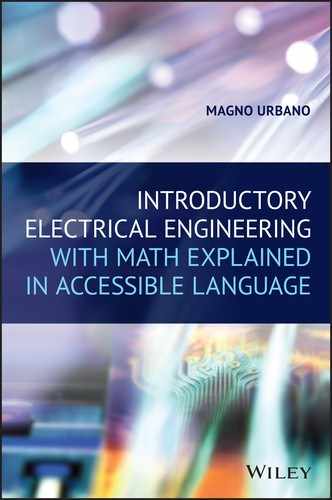Book Description
Offers an understanding of the theoretical principles in electronic engineering, in clear and understandable terms
Introductory Electrical Engineering With Math Explained in Accessible Language offers a text that explores the basic concepts and principles of electrical engineering. The author—a noted expert on the topic—explains the underlying mathematics involved in electrical engineering through the use of examples that help with an understanding of the theory. The text contains clear explanations of the mathematical theory that is needed to understand every topic presented, which will aid students in engineering courses who may lack the necessary basic math knowledge.
Designed to breakdown complex math concepts into understandable terms, the book incorporates several math tricks and knowledge such as matrices determinant and multiplication. The author also explains how certain mathematical formulas are derived. In addition, the text includes tables of integrals and other tables to help, for example, find resistors’ and capacitors’ values. The author provides the accessible language, examples, and images that make the topic accessible and understandable. This important book:
• Contains discussion of concepts that go from the basic to the complex, always using simplified language
• Provides examples, diagrams, and illustrations that work to enhance explanations
• Explains the mathematical knowledge that is crucial to understanding electrical concepts
• Contains both solved exercises in-line with the explanations
Written for students, electronic hobbyists and technicians, Introductory Electrical Engineering With Math Explained in Accessible Language is a much-needed text that is filled with the basics concepts of electrical engineering with the approachable math that aids in an understanding of the topic.
Table of Contents
- Cover
- About the Author
- Preface
- Acknowledgement
- Introduction
- Conventions
- 1 Scientific Method
- 2 Infinitesimal Calculus
- 3 Atom
- 4 Voltage and Current
- 5 Resistors
- 5.1 Introduction
- 5.2 Resistor
- 5.3 Electric Resistance
- 5.4 Symbols
- 5.5 Types of Resistor
- 5.6 Power
- 5.7 Color Code
- 5.8 Potentiometer
- 5.9 Trimpots
- 5.10 Practical Usage
- 5.11 Electric Characteristics
- 5.12 Resistors in Series
- 5.13 Resistors in Parallel
- 5.14 DC and AC Analysis
- 5.15 Input and Output Synchronism
- Solutions
- 6 Ohm’s Laws
- 7 Delta–Wye Conversions
- 8 Capacitors
- 8.1 Introduction
- 8.2 History
- 8.3 How It Works
- 8.4 Electric Characteristics
- 8.5 Electric Field
- 8.6 Capacitance
- 8.7 Stored Energy
- 8.8 Voltage and Current
- 8.9 Examples
- 8.10 AC Analysis
- 8.11 Capacitive Reactance
- 8.12 Phase
- 8.13 Electrolytic Capacitor
- 8.14 Variable Capacitors
- 8.15 Capacitors in Series
- 8.16 Capacitors in Parallel
- 8.17 Capacitor Color Code
- 8.18 Capacitor Markings
- Solutions
- 9 Electromagnetism
- 10 Inductors
- 11 Transformers
- 12 Generators
- 13 Semiconductors
- 14 Diodes and Transistors
- 15 Voltage and Current Sources
- 16 Source Transformations
- 17 Impedance and Phase
- 18 Power
- 19 Kirchhoff’s Laws
- 20 Nodal Analysis
- 21 Thévenin’s Theorem
- 22 Norton’s Theorem
- 23 Superposition Theorem
- 24 Millman’s Theorem
- 25 RC Circuits
- 26 RL Circuits
- 27 RLC Circuits: Part 1
- 28 RLC Circuits: Part 2
- 29 Transistor Amplifiers
- 30 Operational Amplifiers
- 31 Instrumentation and Bench
- Appendix A: International System of Units (SI)International System of Units (SI)
- Appendix B: Color Code: ResistorsColor Code: Resistors
- Appendix C: Root Mean Square (RMS) ValueRoot Mean Square (RMS) Value
- Appendix D: Complex NumbersComplex Numbers
- Appendix E: Table of IntegralsTable of Integrals
- Appendix F: AWG Versus Metric System: Wire Cross Sections AWG Versus Metric System: Wire Cross Sections
- Appendix G: Resistors: Commercial ValuesResistors: Commercial Values
- Appendix H: Capacitors: Commercial ValuesCapacitors: Commercial Values
- Appendix I: Inductors: Commercial ValuesInductors: Commercial Values
- Appendix J: Simulation ToolsSimulation Tools
- Appendix K: GlossaryGlossary
- Index
- End User License Agreement
